When it comes to conservation, poverty alleviation and community support, there’s plenty being done by the tourism industry. Tessa Reed rounds up some of the initiatives within the sector.
1.Children in the Wilderness
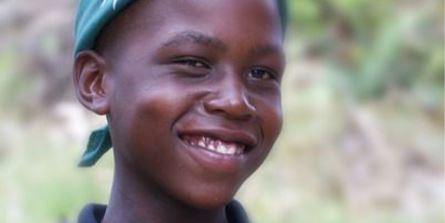
Wilderness Safaris’ Children in the Wilderness (CITW) programme supports the company’s community, conservation and culture principles.
Dr Sue Snyman, Group Community and Culture Manager and Project Director for CITW, says educating the future leaders of Africa is essential to sustaining the continent’s eco-tourism offering. She says, for this reason, the programme is based strongly on the words of Baba Dioum: "In the end we will conserve only what we love; we will love only what we understand; and we will understand only what we are taught."
Snyman explains that teaching children about the environment and conservation encourages them to protect it. “We work backwards: we teach them so that they understand,” she says. “If they understand, they will love it and if they love it, they will conserve it.” The basis of the programme is to teach the children about conservation.
The programme reaches over 2 500 children in rural community schools in seven different countries. As part of the programme, children are taught about conservation and also hosted in annual camps, where they get to experience activities, including game drives. There is also a scholarship to help children in the programme to further their education.
CITW has also started adult eco clubs, which allow the parents of the children in the programme to also learn about the environment. They are also given a space to pass on traditional knowledge and skills including plant uses, beading and weaving. Snyman points out that if these cultural practices are not passed on, the knowledge will be lost. Care is taken to ensure the programme is not restrictive. “We don’t say: ‘You must teach beading’, we’ll say: ‘What do you want to pass on to your children?’.”
2.Save The Rhino
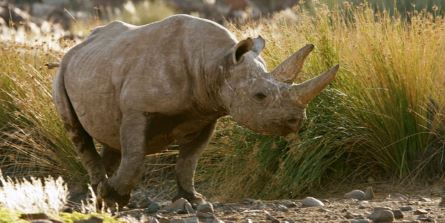
Tourvest Destination Management Contracting Manager, Guido Roeschlau, says any initiative where the community is involved in a way that sustainably protects the environment is a stand-out achievement. He highlights the Save The Rhino project, where local villagers are remunerated through tourism to protect the rhino in Damaraland, Namibia.
In 1982, Save the Rhino Trust was formed. Since then, its efforts and collaboration with the Namibian government, WWF and communities, have seen the Black rhino population increase fivefold and demand for rhino-based tourism is growing steadily.
Save the Rhino Trust is one of the programmes under Save The Rhino, which has programmes in Africa and Asia. The project currently supports field programmes in Kenya, Tanzania, Zambia, Zimbabwe, Namibia and South Africa, as well as the work of the IUCN SSC African Rhino Specialist Group. Its conservation efforts include anti-poaching, monitoring rhinos, environmental education, demand reduction, community conservation and translocations.
3.Uthando
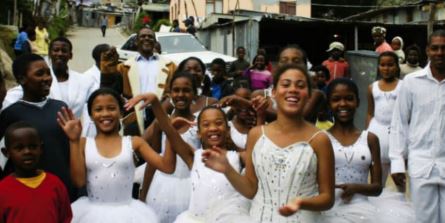
Uthando is a non-profit, Fair Trade in Tourism-accredited organisation that raises funds for community development projects in South Africa. Uthando is the Xhosa word for love.
The initiative offers culturally sensitively philanthropic tours and experiences for groups and individual travellers. Travellers can also visit community projects with which Uthando is working and supporting.
The Uthando Tour covers an extensive discussion on South African history, including the legacy of apartheid, and also highlights the political, social, economic, cultural and local issues confronting South Africa today. The tour visits inspiring community development projects and travellers get to meet the people driving these projects.
Tours generally run Monday to Saturday in the morning.
Says Janine Southwood, Head of Thompsons Africa's Luxury Collection: “James Fernie’s (Uthando Director) heart and soul bring out the best development programmes in the Western Cape.” She adds that his programmes have a huge impact on travellers, and that they are heartfelt and not commercialised.
4.Nakatindi Village
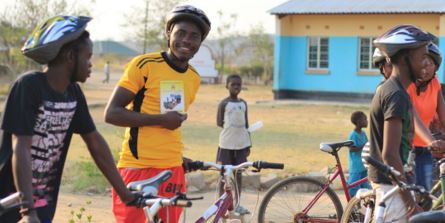
In Zambia, Sanctuary Retreats and guests at Sanctuary Sussi and Chuma support the Nakatindi Community Project. Since its inception, the project has helped co-ordinate a new health clinic, clean water wells, a classroom block, an expanded school garden and a school lunch programme that feeds over 800 children a day.
The project has grown to include a local bike shop enterprise, providing gainful employment opportunities, affordable transportation and expanded healthcare, including a new maternity ward for the village.
5.Throttle the wattle campaign
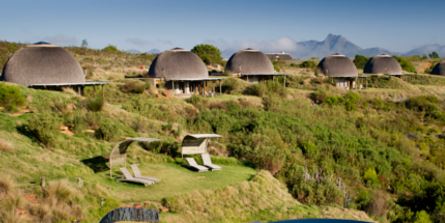
Gondwana and home owners on the reserve get together every few months to go out on to the reserve and cut down wattle trees, which are alien species and cause damage to the natural vegetation.
The reserve, together the national Working for Water project, is currently tackling one of the largest Black wattle (Acacia mearnsii) infestations in the southern Cape. Black wattle is an extremely invasive tree species native to Australia. It competes with and replaces our indigenous fynbos and riverine species. It is also one of the plants with the highest water usage among South Africa’s invasive species and is estimated to reduce the country’s mean annual run-off by 7%.
Gondwana also supports some of the most critically endangered vegetation types in the world. The reserve biannually monitors veld conditions to determine the state of the fynbos. Thanks to this initiative, much of the transformed areas have started to recover by wise veld management.
























